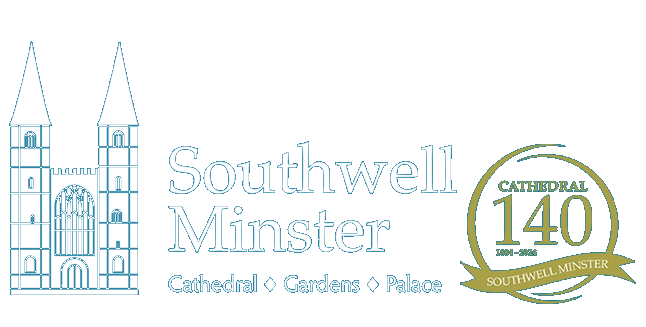The Nave Organ
An organ was built for Southwell Minster in 1662/3 by ‘Mr Derbie’; this was replaced in 1701 by a new one-manual instrument in a fine case on the screen, probably built by Father Smith, repaired after a Nave roof fire in 1711, and again in 1727. A second manual (in a ‘chair’ case) was made by Dallam of York in 1730 and finished after his death by Thomas Swarbrick. In 1765-66 John Snetzler effected a complete rebuild and added a four-stop Swell, after which the organ gained a fine reputation for the quality of its tone. Work by G P England (1804), Buckingham (adding pedals in 1821), and Groves of London (c. 1854—a new and larger Swell) did not help to make the organ readily serviceable, and in 1892 Bishop & Son replaced it with a completely new 4-manual organ in four divided cases on the screen.
A 1934 rebuild by Hill Norman & Beard placed the Great and most of the Pedal in the Nave triforium, electrified the action and enlarged the tonal scheme considerably; there were two consoles, one mobile (with stop-keys) in the nave. The pipework was revoiced on very smooth lines and included diaphonic basses and considerable manual and pedal extension. Caröe & Passmore designed a new screen case (partly modelled on the Father Smith case). There were no fewer than 81 speaking stops on three manuals and pedals. In late 1959 a Positiv organ was added under the screen on the south side, its pipework being visible from nave and quire.
Another rebuild took place in 1971, when the Great was squeezed into the screen case along with the smaller pedal ranks, most extended ranks were removed, and much upperwork to manuals and pedals was added. The organ was revoiced on Baroque lines, with lowering of upper lips and reduction of nicking. However, with much 1892 action work and soundboards along with 1934 wiring, by 1989 the organ had become unreliable; its sound was undistinguished, making little impact in the nave and sounding completely unbalanced in the quire.
It was soon clear to Paul Hale, arriving in Southwell as Organist & Rector Chori in 1989, that a single organ on the screen could not satisfactorily cope with the musical and liturgical demands of both nave and quire, for two reasons:
- sound does not carry past the crossing under the central tower.
- organs can in any case only speak in one direction.
Plans were drawn up to provide a second-hand electric-action organ, suitably rebuilt and modified, to support hearty singing at Diocesan services in the nave, as well as being able to accompany choirs singing in that part of the building. At the same time, consideration began to be given to providing a brand-new mechanical action organ on the screen, for the daily choral services in the quire.
In January 1990 Wood of Huddersfield suggested the installation of a large Binns organ formerly in the Upper Independent Chapel, Heckmondwike. This would be rebuilt as a three manual, with very complete Swell and Great divisions and a small Solo Organ comprising a Clarinet (a gift from Philip Wood) and a Tuba and its 4ft extension from the Minster’s HN&B 1934 material. The organ was restored and electrified, adapted for the spacious south triforium site (four bays) and a booster blower added to provide 16ins wind for the Tuba. A new mobile console was built, employing the refurbished keys from the Minster’s 1934 nave console and the re-engraved ivory stob-knobs from the Binns organ. An SSL transmission was installed along with a combination mechanism by Taylor. One link with the 1892 organ was the re-use of the Bishop 16ft Open Wood, which was still lying horizontal in the nave triforium.
The organ was opened by Roger Fisher on May 25th 1992, since when many Bank Holiday recitals on it have drawn large and enthusiastic audiences and all major Diocesan services have (at last) been provided with an inspiring and effective organ accompaniment.
Great Organ
- 16 Double Open Diapason
- 8 Open Diapason No. 1
- 8 Open Diapason No. 2
- 8 Gamba new
- 8 Hohl Flute
- 8 Rohr Flute
- 4 Principal
- 4 Gemshorn new
- 4 Harmonic Flute
- 22/3 Twelfth
- 2 Fifteenth
- IV Full Mixture (15.19.22.26) new
- III Sharp Mixture (26.29.33) new
- 8 Posaune new
- 4 Clarion new
- Tremulant
Swell Organ
- 16 Bourdon
- 8 Open Diapason
- 8 Gedackt
- 8 Salicional
- 8 Voix Céleste (t.c.)
- 4 Geigen Pincipal
- 4 Flauto Traverso
- 2 Fifteenth
- 2 Piccolo
- II Sesquialtera (12.17) new
- III Mixture (15.19.22)
- 16 Double Trumpet
- 8 Trumpet
- 8 Oboe
- 4 Clarion new
- Tremulant
Solo Organ (unenclosed)
- 8 Clarinet (Gt. Tremulant affects this)
- 8 Tuba (16 ins. w.p.) old Screen Organ
- 4 Clarion (16 ins. w.p.) (ext Tuba)
Pedal Organ
- 32 Double Open Wood (digital)
- 16 Open Diapason Wood
- 16 Open Diapason Metal (from Great)
- 16 Bourdon
- 8 Principal
- 8 Bass Flute (ext. Bourdon)
- 4 Fifteenth (ext. Principal)
- 4 Stopped Flute (ext. Bass Flute)
- 32 Contra Trombone (digital)
- 16 Trombone
- 8 Clarion (ext Trombone)
- Great to Pedal
- Swell to Pedal
- Choir to Pedal
- Solo to Pedal
- Great & Pedal Combinations Coupled
- Generals on Swell Toe Pistons
Accessories
16 programmes to Departmental combinations 96 programmes to General combinations Sequencer with advance and retard thumb & toe pistons (separate memory, not working on the generals)
- 8 thumb pistons to Swell
- 8 thumb pistons to Great
- 3 thumb pistons to Solo
- 8 General thumb pistons
- 8 toe pistons to Pedal
- 8 toe pistons to Swell
- 7 reversible thumb pistons
- 3 reversible toe pistons
FIND OUT MORE ABOUT
[social_warfare]
